A lush, green lawn is a vital part of any beautiful home, providing a welcoming space for relaxation and outdoor activities. In Central Florida, maintaining a healthy lawn can be a challenge due to the region’s unique climate and soil conditions.
Over time, various factors such as pests, diseases, and harsh weather can take a toll on your grass, leaving it looking worn out and unhealthy. When this happens, it might be time to consider laying new sod. As Central Florida’s premier turf management company, Next Level Turf understands the importance of recognizing when your lawn needs a fresh start.
Let’s explore the critical signs that indicate your lawn requires new sod. We’ll provide expert evaluation tips to help you assess the condition of your grass accurately. From persistent bare patches to unusual discoloration, we’ll cover all the essential aspects you need to consider before making this important decision.
Replacing sod isn’t just about aesthetics; it’s also crucial for the overall health and sustainability of your lawn. By paying attention to these signs, you can ensure your outdoor space remains vibrant and robust.
Whether you’re a seasoned gardener or a new homeowner, understanding when to replace sod will save you time, money, and effort in the long run. So, let’s dive into the essential indicators that your lawn may need new sod and how you can address these issues effectively.
Persistent Bare Patches
One of the most obvious signs that your lawn may need new sod is the presence of persistent bare patches. Bare spots in your grass can occur for various reasons, including heavy foot traffic, pest infestations, and soil compaction. While small bare patches can sometimes be resolved with proper lawn care practices, larger or recurring patches signal more serious problems.
Heavy Foot Traffic: Areas with high foot traffic, like pathways or play areas, often develop bare spots as the grass gets worn down. Grass recovery in these areas can be challenging and may require new sod to restore full coverage.
Pest Infestations: Pests like grubs and sod webworms feed on grass roots, causing sections of your lawn to die and create bare patches. If you notice birds pecking at your lawn or if the affected areas can be easily lifted, you might have a pest problem that new sod can help correct.
Soil Compaction: Compacted soil restricts root growth and water absorption, leading to bare spots. Aerating the soil may help in minor cases, but if the problem persists, laying new sod is often the best solution.
Unusual Discoloration
Another key indicator that your lawn may need new sod is unusual discoloration that does not improve with standard care practices. Discoloration can be caused by poor soil quality, diseases, or heat stress, and understanding what’s affecting your lawn is crucial.
Poor Soil Quality: Soil that lacks essential nutrients will support weak and discolored grass. Conducting a soil test can reveal deficiencies, and while fertilizers might offer temporary relief, new sod will ensure long-term health and uniform color.
Grass Diseases: Various diseases can cause discoloration, including fungal infections like brown patch and dollar spot. Diseased grass often has irregular brown, yellow, or gray patches. If these patches spread quickly and don’t respond to treatment, new sod might be necessary to eradicate the problem.
Heat Stress: Central Florida’s hot temperatures can cause grass to wilt and turn brown. Although proper watering can mitigate some heat stress, severely affected lawns may benefit from new sod to ensure resilience against future heat waves.
Thinning Grass Density
Thinning grass density is a sign that your lawn’s root system is weak. Healthy grass should have a dense, lush appearance, but several factors can cause thinning, making your lawn look patchy and unhealthy.
Nutrient Deficiency: Lack of essential nutrients like nitrogen, phosphorus, and potassium can weaken grass, leading to thinning. Regular fertilization might help in some cases, but new sod often provides a quicker and more effective solution to restore density.
Improper Mowing Practices: Cutting the grass too short or using dull mower blades can stress the grass, causing it to thin out over time. Ensuring proper mowing techniques is essential, but chronically thinned grass may still require new sod for recovery.
Shade Problems: Grass needs adequate sunlight to thrive. Areas shaded by trees or buildings often suffer from thinning as the grass can’t photosynthesize sufficiently. Choosing shade-tolerant sod is a good strategy to maintain healthy grass in these areas.
Excessive Weed Growth
Weeds compete with grass for nutrients, water, and sunlight, often leading to poor lawn health. Excessive weed growth is a clear indication that your lawn may benefit from sod replacement.
Weak Grass: Weeds are more likely to invade when grass is weak. Crabgrass, dandelions, and other invasive species can quickly take over, making it challenging for the grass to recover. Laying new sod can give your lawn a fresh start, creating a dense grass cover that prevents weeds from establishing.
Weed Management: While herbicides can control weeds to some extent, they don’t address the underlying issue of weak grass. Replacing sod provides a healthier, more vigorous lawn that is better equipped to resist future weed invasions.
Persistent Muddy Areas
If you notice persistent muddy areas in your yard, this could be an indication of poor drainage or heavily compacted soil. Muddy spots create an unattractive and unhealthy lawn environment.
Drainage Issues: Poor drainage causes water to pool, leading to muddy spots and root rot. While installing proper drainage can resolve some issues, replacing sod can help ensure the new grass takes root properly and improves water absorption.
Compacted Soil: Similar to bare patches, compacted soil hinders proper water penetration and root growth. Aerating the soil may help, but new sod is often the best option for fully addressing these issues and creating a healthy lawn.
By evaluating your lawn for these signs, you can determine if sod replacement is necessary. Persistent bare patches, unusual discoloration, thinning grass density, excessive weed growth, and persistent muddy areas all indicate that your lawn may need new sod. Taking proactive steps to address these issues will result in a healthier, more resilient, and visually appealing lawn.
Root Problems
Healthy grass depends on a strong root system. If your lawn’s roots are weak or damaged, the grass above will suffer. Recognizing root problems early can help you decide if new sod is necessary.
Root Rot: Root rot is caused by fungal infections in overly wet soil. Signs include yellowing grass, stunted growth, and a foul odor in the soil. To check, gently pull on the grass. If it comes up easily, taking the roots with it, you likely have root rot. New sod, coupled with improved drainage, can remedy this.
Shallow Roots: Grass with shallow roots struggles to access nutrients and water, making it susceptible to stress and disease. This often results from compacted soil or frequent shallow watering. If aerating and deep watering don’t help, replacing the sod can give your lawn a fresh start with deeper, healthier roots.
Pest Damage
Pests are a common problem in Central Florida and can severely damage your lawn. Identifying the signs of pest damage early can help you take the necessary steps to restore your lawn.
Grubs: Grubs are beetle larvae that feed on grass roots, causing large, brown patches. To check for grubs, dig a small section of turf. Finding more than five grubs per square foot indicates a problem. In severe cases, replacing the sod may be the best solution.
Sod Webworms: These caterpillars chew on grass blades, creating small, ragged patches. If you notice moths flying over your lawn in the evening, it may indicate a sod webworm problem. New sod can help reestablish healthy grass after treating the pest issue.
Mole Crickets: Moles crickets tunnel through the soil, uprooting grass and causing it to die. Signs of infestation include raised burrows and thinning grass. Repairing the damage through sod replacement ensures a uniform, healthy lawn after pest control treatments.
Drainage Issues
Proper drainage is essential for a healthy lawn. Poor drainage leads to waterlogged soil and root problems. Identifying drainage issues and understanding their impact can guide your decision to replace sod.
Standing Water: If water pools on your lawn after rain, it indicates poor drainage. Grass in these areas will often be weak or dead. Improving drainage can prevent future problems, but new sod may be necessary to restore affected areas.
Erosion: Water runoff can erode soil, exposing roots and creating uneven surfaces. Signs include visible soil displacement and bare patches. Installing new sod after addressing erosion issues can stabilize the soil and promote healthy growth.
Compacted Soil: Soil compaction reduces water infiltration, leading to drainage problems and weak grass. Aerating can help, but replacing sod ensures a fresh start with improved soil structure and drainage.
Lawn Age
Sometimes, grass wears out as it ages. Understanding the signs of an aging lawn can help you decide when it’s time to introduce new sod.
Worn Out Sod: Older sod loses its vigor and becomes less resistant to pests, diseases, and weather stress. If your lawn looks tired despite proper care, it may be time for new sod to revive its appearance and health.
Frequent Repairs: If your lawn requires constant patching and repairs, it indicates underlying problems. Replacing the entire sod can provide a more long-term solution, reducing the need for continuous maintenance.
Improved Grass Varieties: Newer grass varieties often have better resistance to pests, diseases, and drought. If your lawn consists of older grass types, replacing it with new sod can take advantage of these improvements, leading to a healthier and more resilient lawn.
Nutrient Deficiencies
A healthy lawn requires balanced nutrients. Recognizing signs of nutrient deficiencies can indicate the need for sod replacement.
Yellowing Grass: Grass that turns yellow usually lacks essential nutrients like nitrogen. While fertilizers can help, persistent yellowing suggests deeper soil issues, which new sod can address by providing fresh, nutrient-rich soil.
Stunted Growth: Grass that grows slowly or appears dwarfed may lack proper nutrients. Soil tests can reveal deficiencies, and new sod can supply the necessary nutrients for vigorous growth.
Soil pH Imbalance: Grass grows best in slightly acidic to neutral pH levels. If your soil’s pH is too high or too low, it can prevent nutrient absorption. Correcting the pH and laying new sod ensures optimal growth conditions.
Damaged Lawn
Physical damage to your lawn can result from various activities, making sod replacement necessary to restore its appearance and health.
Construction Damage: Home renovations or landscaping projects can leave your lawn with damaged or compacted soil. Replacing sod helps repair these areas quickly, promoting even growth and a uniform appearance.
Pet Damage: Pets can create worn-out paths or dead spots from urine. Introducing new sod to these areas can rejuvenate your lawn and provide a more resilient surface for your furry friends.
Storm Damage: Severe weather, including hurricanes and heavy rain, can devastate a lawn. Replacing sod after such events helps rapidly restore the lawn’s functionality and aesthetic appeal.
By addressing root problems, pest damage, drainage issues, lawn age, nutrient deficiencies, and physical damage, you can determine if sod replacement is necessary. Recognizing these signs helps maintain a healthy, beautiful lawn, enhancing your outdoor space’s overall appearance and usability.
Unmanageable Thatch Buildup
Thatch is a layer of dead grass, roots, and debris between the soil and living grass. While some thatch is normal, too much can harm your lawn. Recognizing when thatch becomes unmanageable is key to maintaining a healthy lawn.
Signs of Excessive Thatch: Thatch thicker than half an inch can prevent water, air, and nutrients from reaching the soil. Signs include a spongy feel while walking on the lawn and difficulty in water penetration. If dethatching tools or processes do not effectively remove this buildup, it may be time for new sod.
Consequences of Thick Thatch: Excessive thatch can harbor pests and disease, creating a hostile environment for grass. If your lawn consistently struggles despite efforts to manage thatch, replacing the sod can provide a clean slate and promote healthy growth.
Recurring Weed Invasion
Weeds can be more than just a nuisance; they can signify underlying lawn health issues. If weeds continually invade your lawn, it might be time to consider sod replacement.
Persistent Weeds: Weeds thrive in unhealthy lawns where grass is weak. If your lawn needs frequent herbicide treatments and still faces weed problems, it indicates that the grass is not robust enough to compete. New sod can establish a thicker, more resilient lawn that can naturally resist weeds.
Types of Invasive Weeds: Different weeds can cause specific issues. Crabgrass spreads quickly, outcompeting grass. Dandelions have deep taproots that can be hard to remove completely. Introducing new sod with more competitive grass varieties can reduce these problems.
Poor Lawn Texture
The texture of your lawn affects its aesthetic appeal and usability. A lawn that feels rough or uneven may benefit from sod replacement.
Rough Texture: Grass should feel soft and consistent underfoot. Factors like hard soil, sparse grass coverage, and thick thatch can create a rough texture. If soil amendments do not improve texture, replacing the sod can provide a smoother, more pleasant lawn.
Bumpy Lawn: Uneven ground can result from soil settling, drainage issues, or pest activity. These bumps can make mowing difficult and become a tripping hazard. Leveling the ground and installing new sod can create a more even and attractive lawn.
Frequent Turf Diseases
Lawns that often suffer from diseases may indicate the need for new sod. Turf diseases can weaken the grass, making it more susceptible to further problems.
Fungal Infections: Diseases like brown patch, dollar spot, and rust cause discoloration and weaken grass. If your lawn frequently shows symptoms of these fungal infections despite treatment, new sod may be necessary to break the disease cycle.
Resistance Issues: Some older sod types are more susceptible to diseases. Newer sod varieties often have better disease resistance, providing a healthier and more robust lawn.
Dead Grass
Large areas of dead grass are a clear sign that your lawn might need new sod. Dead grass not only affects the look of your yard but also its health.
Widespread Dieback: Small dead patches can be manageable, but extensive dieback is harder to reverse. Dead grass fails to compete with weeds, pests, and disease, compromising the entire lawn. Installing new sod can quickly revive a dying lawn, replacing dead areas with healthy grass.
Persistent Problems: If dead patches recur after reseeding or focused care, it indicates deeper issues. New sod provides a more reliable solution, ensuring a fresh, healthy start for your lawn.
Soil Problems
Healthy soil is the foundation of a robust lawn. Poor soil conditions can lead to persistent lawn issues, making sod replacement necessary.
Compacted Soil: Compacted soil restricts root growth and water absorption. Aerating can help in the short term, but new sod over freshly prepared soil often yields better long-term results.
Salinity Issues: High soil salinity, often due to poor irrigation practices, can inhibit grass growth. If your soil test reveals high salt levels and grass struggles to thrive, replacing the sod can be effective after amending the soil.
Soil Contamination: Contaminants from chemicals or pollutants can degrade soil health. If these are present, starting with new sod after soil remediation can revitalize your lawn and avoid future problems.
Ineffective Lawn Care Efforts
Despite your best efforts, some lawns refuse to stay healthy. If your regular lawn care routines prove ineffective, it may be time to consider sod replacement.
Frequent Fertilization Needs: Lawns needing constant fertilization to look green may suffer from underlying soil problems. New sod, along with proper soil amendments, can help balance nutrient levels and reduce dependency on fertilizers.
Water Management Challenges: Lawns that struggle between being too dry or too wet may indicate poor soil structure. New sod, combined with soil improvements, can enhance moisture retention and drainage properties.
Outdated Grass Varieties
Older grass types in your lawn might not be suited to current environmental conditions or lawn care practices. Updating your lawn with new sod offers several benefits.
Better Tolerance: Newer varieties are often bred for better tolerance to drought, disease, and pests. Replacing old sod with updated grass types can result in a more resilient and low-maintenance lawn.
Improved Appearance: Modern sod varieties often provide a more uniform color and texture. Installing new sod can enhance the visual appeal of your lawn, making it more inviting and enjoyable.
By identifying signs like unmanageable thatch, recurring weed invasion, poor lawn texture, frequent turf diseases, dead grass, soil problems, ineffective lawn care efforts, and outdated grass varieties, you can determine the need for sod replacement. Understanding these indicators ensures you take proactive steps, resulting in a healthier, more vibrant lawn.
Time for a Fresh Start with New Sod
A vibrant, healthy lawn enhances your home’s curb appeal and provides a welcoming outdoor space. Recognizing the signs that your lawn needs new sod, such as persistent bare patches, unusual discoloration, and thinning grass density, is essential for maintaining its beauty and health. Other indicators, like frequent pest damage, poor drainage, and outdated grass varieties, also highlight the need for sod replacement.
Addressing these issues promptly can save you time, effort, and money in the long run. New sod not only revitalizes your lawn but also ensures it remains resilient against pests, diseases, and environmental challenges. A fresh layer of sod creates a uniform, lush appearance that is both attractive and functional.
Next Level Turf is Central Florida’s premier turf management company, specializing in sod replacement and lawn care. Our team of experts will evaluate your lawn’s condition and provide tailored solutions to restore its health and beauty. Don’t let lawn problems linger—take proactive steps to achieve the lush, green lawn you deserve.
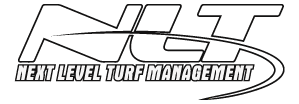
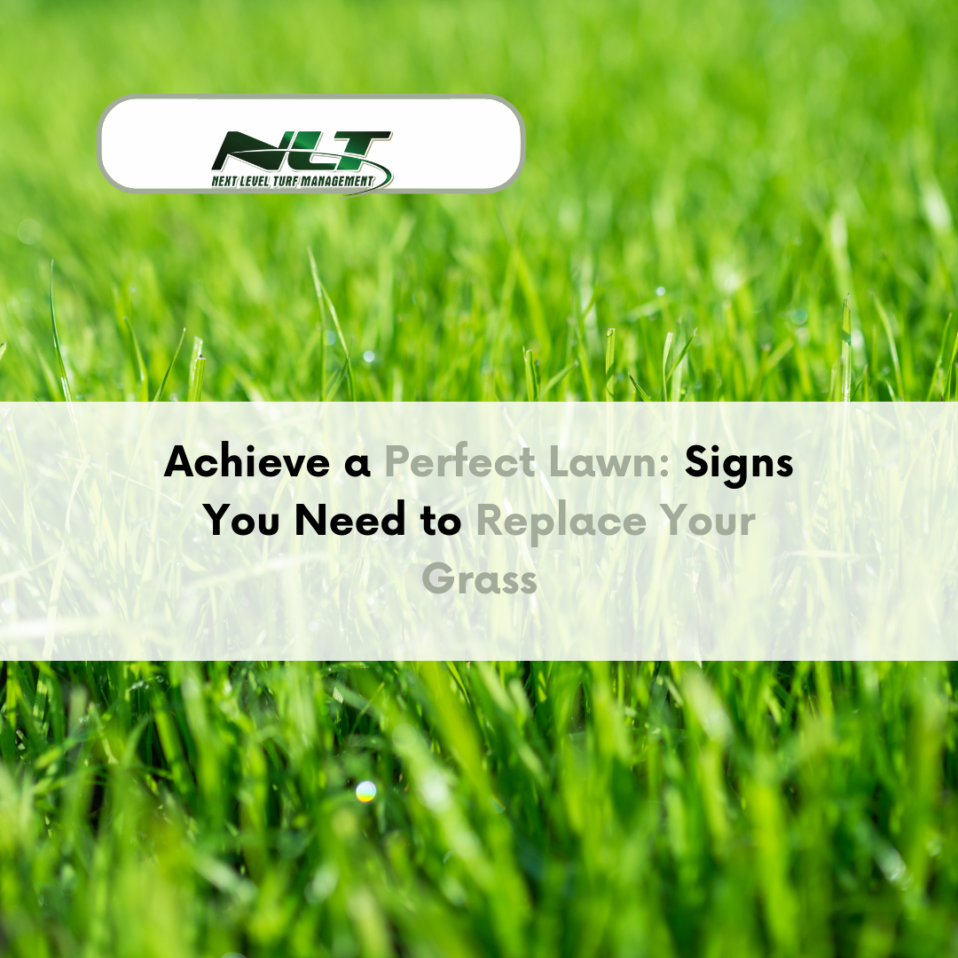
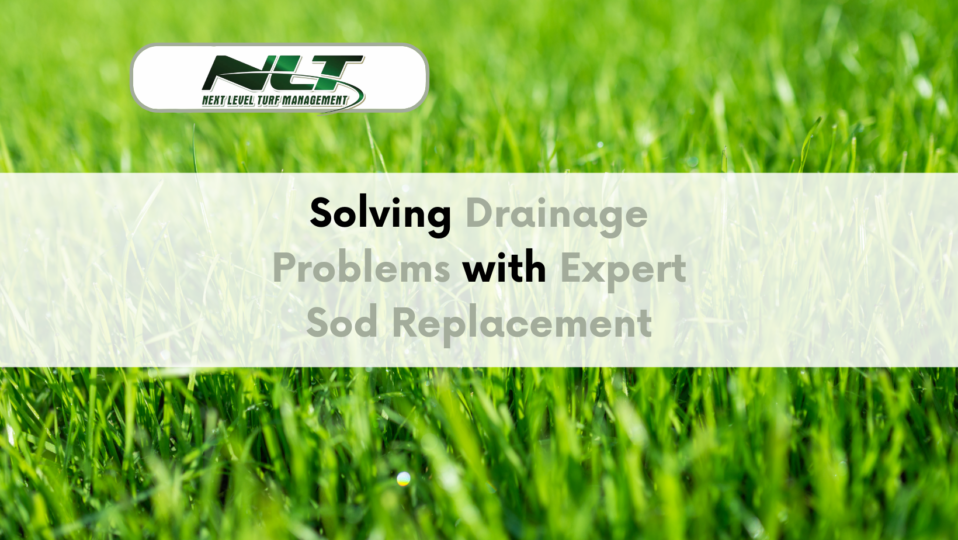
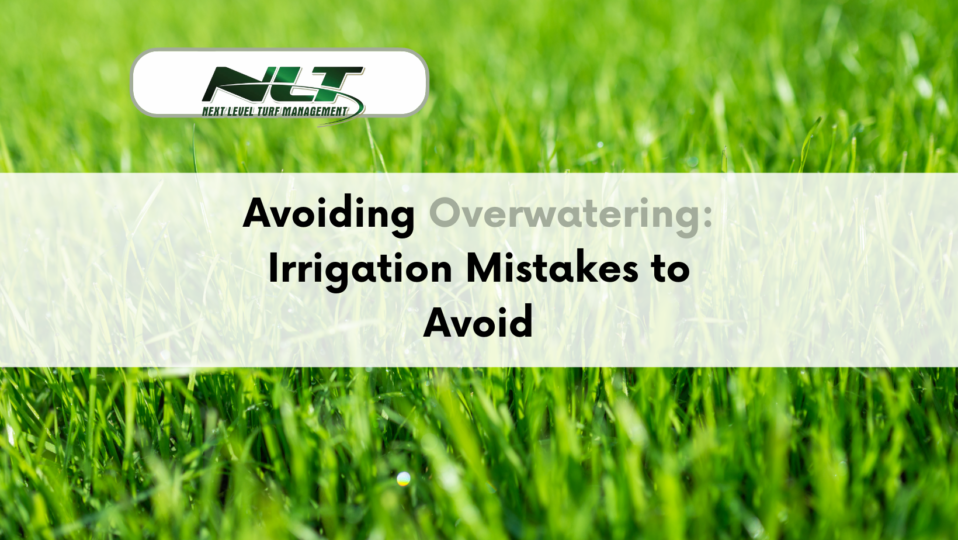
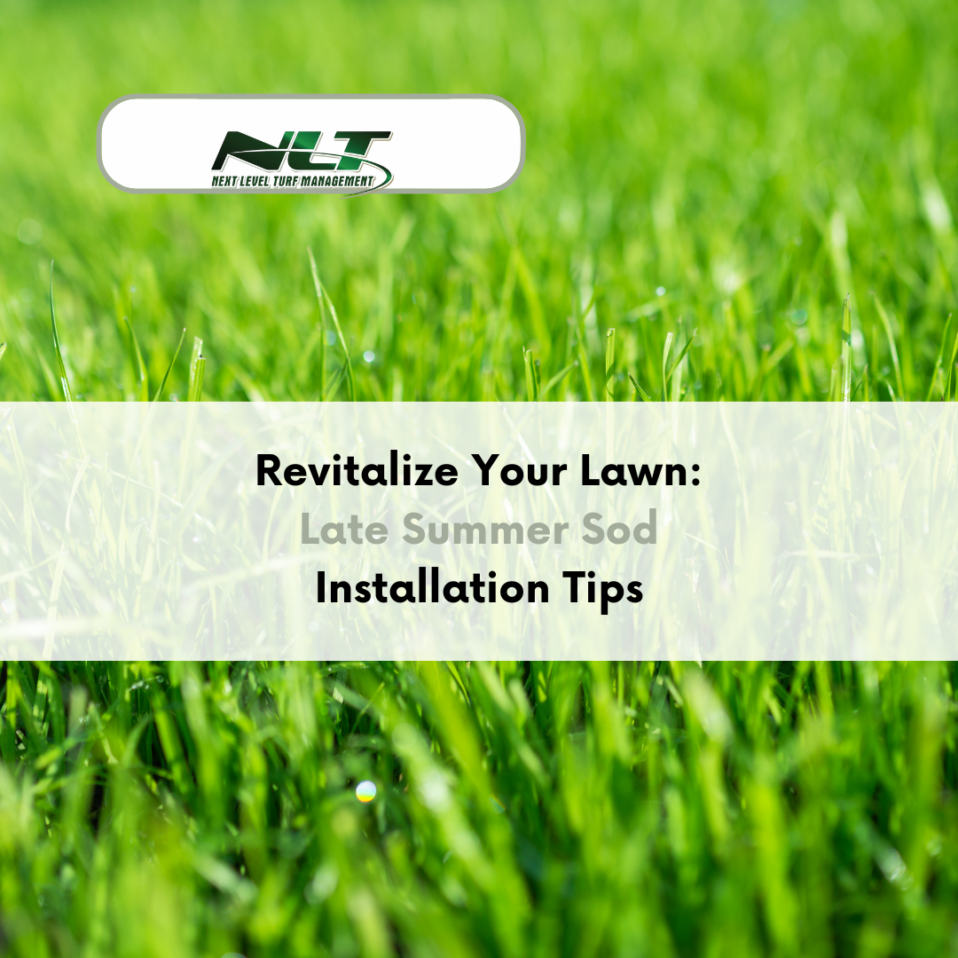


Post a comment